Dive and get to the bottom of Gran Canaria
In Gran Canaria there are numerous dive sites which are ideal to explore the biodiversity and beauty of the island’s seabed through snorkelling and scuba diving.
Is it possible to fly underwater? An inhabitant of Gran Canaria’s seabed has shown us that it is indeed possible. It moves at a leisurely pace, almost in slow motion, barely stirring the water around it, like a butterfly fluttering through the ocean. The magnetic elegance of this type of stingray is just one of the wonders that await those who venture into the depths of the island.
Everything seems to merge and blend together where the mainland and the Atlantic Ocean meet. In fact, there are also clouds under the sea of Gran Canaria. In this case, they are illuminated by the shimmering silver and gold scales of grunts and sand steenbrases, species of fish that do not mind being observed at a short distance by respectful visitors who abide by the laws that govern the underwater world.
The 230 kilometres that make up the silhouette of Gran Canaria offer numerous sites that are perfect for diving, no matter your level of expertise or the season, as average temperatures range from 18° C in winter to 24° C throughout the rest of the year. This makes it easier to peek into the blue universe by participating in outings that may start at the foot of a pier, a cove, or the seaside promenade of a village lined with houses as colourful as the fish that abound along the shore.
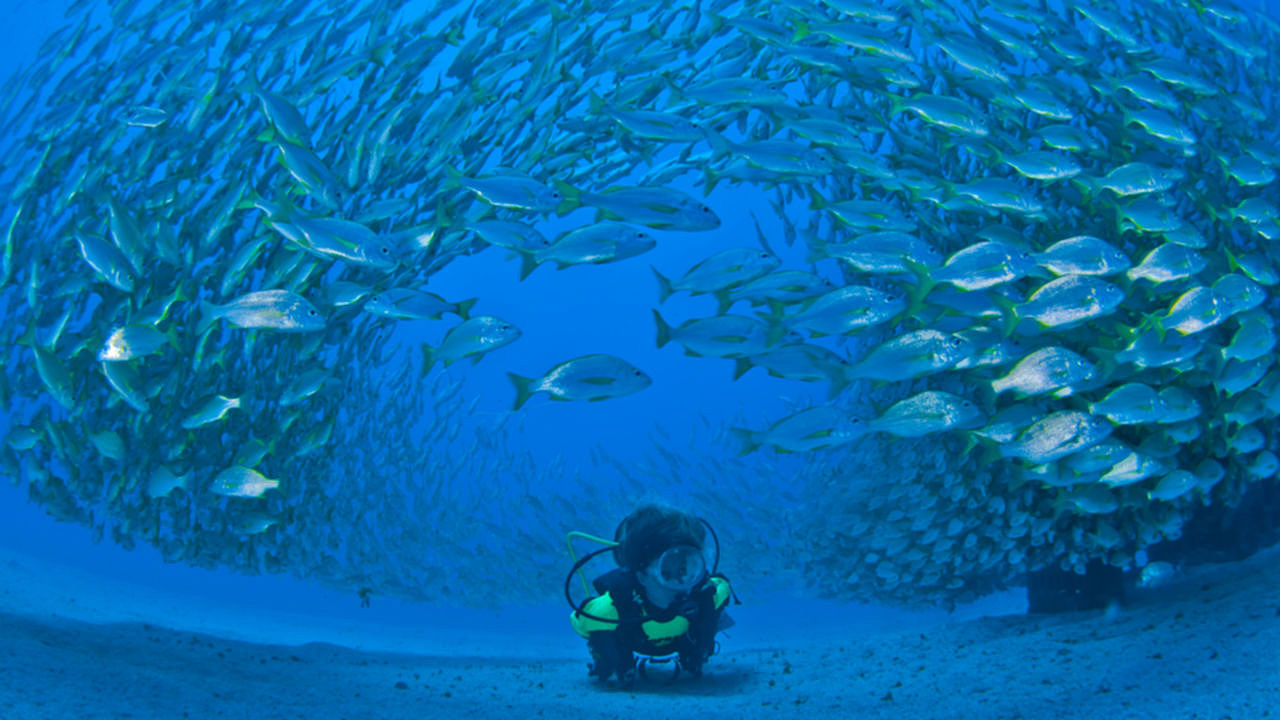
In addition, one of the advantages of snorkelling and scuba diving in Gran Canaria is the great expertise of the clubs and schools across the island. Thanks to them, it is possible to discover the strong character of the island’s seabed, which is notable for its biodiversity, the high presence of endemic species and the distinctive geological formations that can only be found in areas shaped by volcanic activity.
There are many doors to another world within this underwater world in Gran Canaria. Some of the most interesting dive sites across the island, apart from being safe – considering that safety precautions should always be taken at sea –, and suitable for snorkelling, are also very easy to access from land, such as Taliarte, El Cabrón Beach or Risco Verde in the southeast; and Caleta Baja and Sardina de Gáldar, Las Merinas de Agaete and Las Canteras in the north of the island, among others.
Your adventure could start only a short distance from a small pier where fishing boats come and go every day, like the calm waters at the mouth between the port of Taliarte and Melenara Beach. Here, a rocky platform serves as a prelude to an underwater cliff with its own meadow. Its seagrass bed provides shelter and food for a moving rainbow of fish such as: the Salema, the Mediterranean parrotfish, the Green Atlantic wrasse and the ornate wrasse.
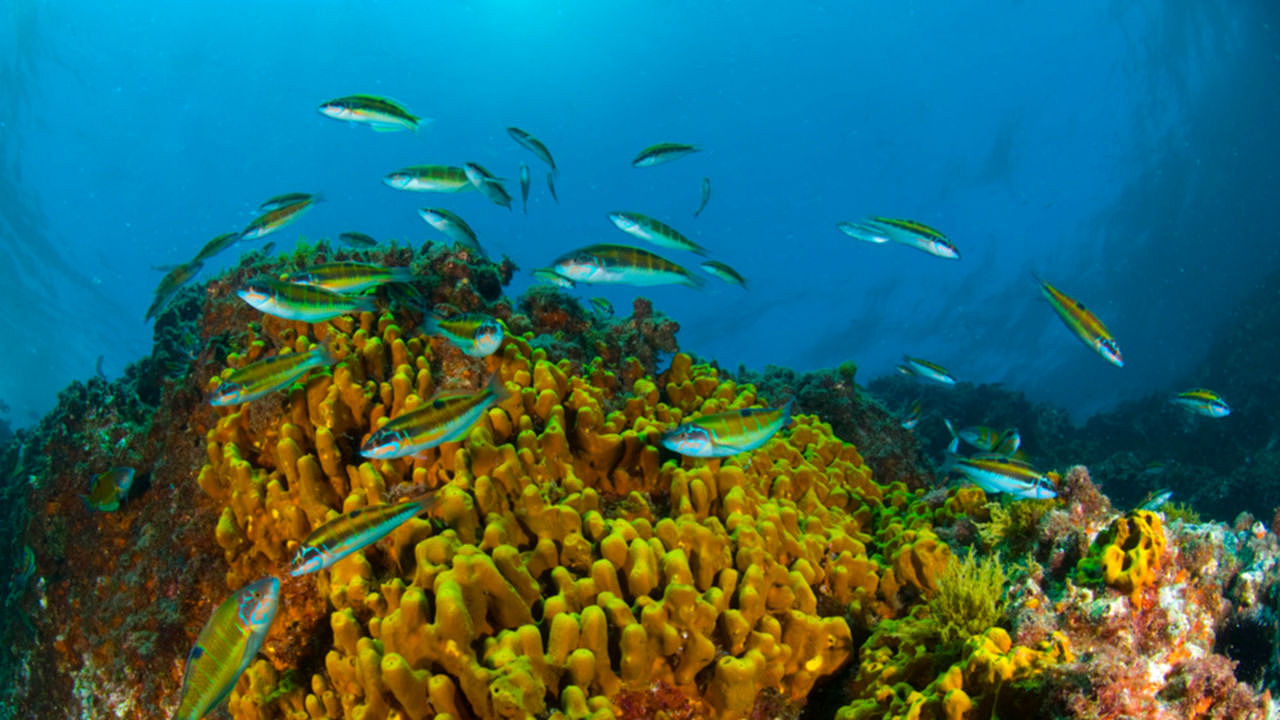
Octopuses and spider crabs also jump onto the stage of this play, which takes place daily, to take part in a performance that seems to be directed from a short distance by the bronze Neptune statue overlooking the bay. This is a great place for snorkelling, but also for beginner scuba divers and a good choice for a night dive, as this beautiful performance continues after nightfall, when other shellfish join in, such as the Small European locust lobster, the beadlet anemone and, sometimes, with a bit of luck, even some squid that leave the deep seabed in search of food may also make an appearance.
The variety of landscapes on the surface of the island of Gran Canaria also finds its match under the sea. The El Cabrón Beach is one of the most beautiful pages of this book written in blue ink. Its underwater cliff is a submerged city where the nooks and crannies of the rock are home to moray eels, shi drums with their white polka dot suits, shiny bigeyes and forkbeards, while the sandy bottom is interspersed with striped red mullets. The penetrating gaze of dusky and island groupers, together with the comings and goings of yellow barracudas and amberjacks, add the finishing touches to a scene that will make you feel as if you could hear the heartbeat of the ocean.
A sudden blue flash of light shines through the crystal-clear waters of Risco Verde, at the northern end of Arinaga’s Beach. It is a Canary damsel, a small but very territorial fish. Its eyes, which are very large relative to its body size, spark with a look halfway between scrutiny and defiance. The Mediterranean parrotfish, a species of parrotfish, spend their days chewing algae and crustaceans off the rocks; their diet being the reason why they are considered a delicacy. Every bite is a new dive. And by the way, there are fishermen who still use a fishing rod with a goat horn in the top to catch them. And when the night comes and spreads its mantle over the depths of the sea, it is time for the angelsharks to come out in this place, cradled by the sound of the waves.
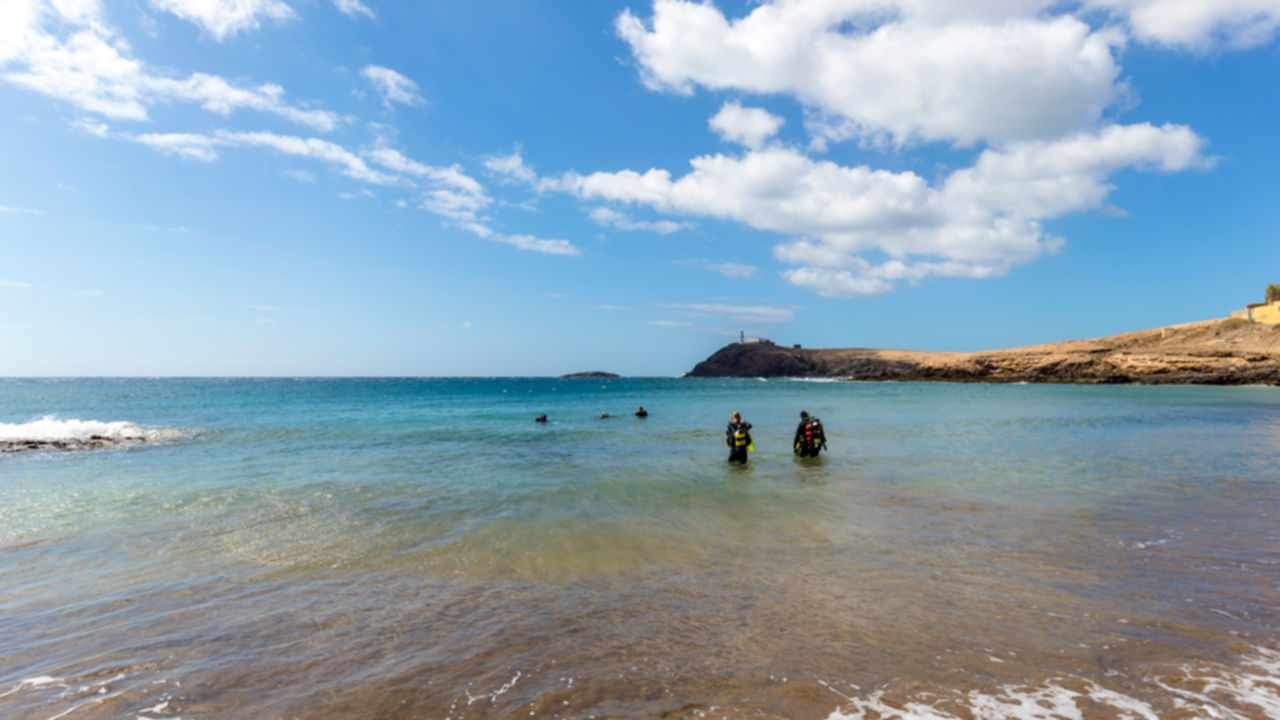
From Punta de Maspalomas to Puerto de las Nieves in Agaete, the marine strip of the Gran Canaria Biosphere Reserve stretches over 35,000 hectares of underwater treasures. Part of the richness of this underwater world can be seen with a mask and a snorkel from any of the beaches in the south of Gran Canaria or by hiring the services of a specialised company.
The blue tones of the sky and the Atlantic Ocean merge together in the south of Gran Canaria, whose seabed is the resting spot for shipwrecks which have now become marine festivals. Such is the case with the wrecks of the former fishing boat Cermona II and Meteor II, a former boat for tourist rides. Here, life is built on the ruins of the past. At Baja de Pasito Blanco, you will be able to admire delicate silk palm trees gently swaying in the ocean currents, an image that captures the deep poetry of the sea.
These vibrant mysterious places can only be reached by boat, so you will need to hire the services of specialised companies. This is also the case with the artificial reef in Arguineguín. On the sandy bottom of this small Atlantis, colonies of garden eels poke their stringy bodies out of their burrows like periscopes watching us from the depths of this kingdom of light and shadow.
In Las Merinas, at the bottom of the natural monument known as Dedo de Dios (God’s finger) in Agaete, -a high sea stack whose top broke off during a storm in 2005-, a cluster of rocks has created an underwater city with a large population of corals, giant anemones and cleaner shrimps.
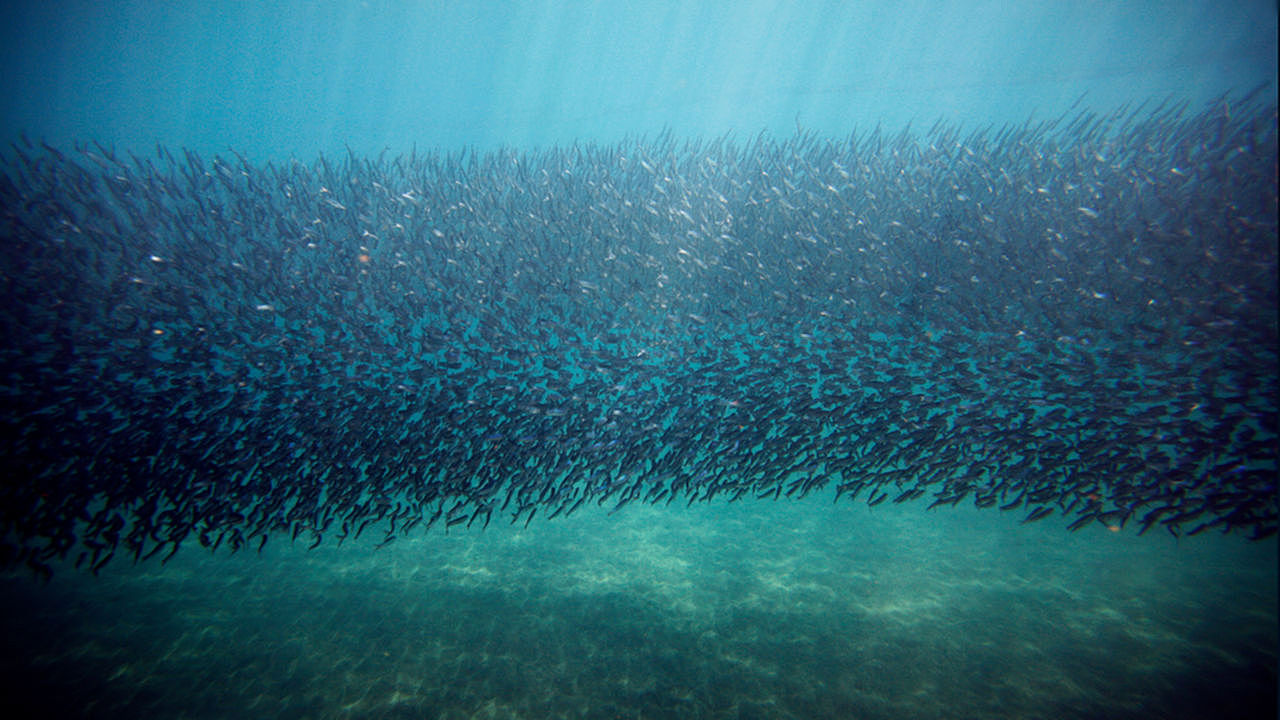
On the northwest coast of Gran Canaria, Caleta Baja offers the possibility of swimming next to schools of horse mackerels or giant manta rays. Nearby, in Sardina, a few steps down the stairs of the pier are all it takes for you to start a journey through the waters of this bay, protected from the force of the ocean and the wind, as seahorses, angelsharks, African striped grunts, sponge fish, bogues and yellow barracudas know well.
The blurred boundaries between sea and land sometimes seem to disappear completely. This has been the case more than once in Las Palmas de Gran Canaria. The Cathedral of Santa Ana and other famous buildings in the city were built with materials extracted from the stone barrier reef in Las Canteras Beach, known as La Barra. This reef stretches for more than two kilometres, only two hundred metres from the shore, with a fantastic array of marine life on display which can easily be seen at a glance. Las Canteras Beach is located at the foot of a large city which finds its reflection under these waters, as is also the case with Baja Fernando, located in the Confital Bay, in the shadow of volcanoes.
But long, long before there was one in the city, nature had already erected its own Cathedral. That is the name given to the underwater structure located just a few minutes by boat from the coast. The dive through the Cathedral starts at the mouth of a cave that leads to a series of vaults, corridors and crevices inhabited by sea urchins, shrimps, bogues, ornate wrasses and combers. This temple in the Atlantic Ocean is also the perfect vantage point to watch some pelagic species passing by, such as the amberjacks and yellow barracudas, which carry with them the echo of the seven seas which resounds within the walls of this Cathedral without a bell tower.

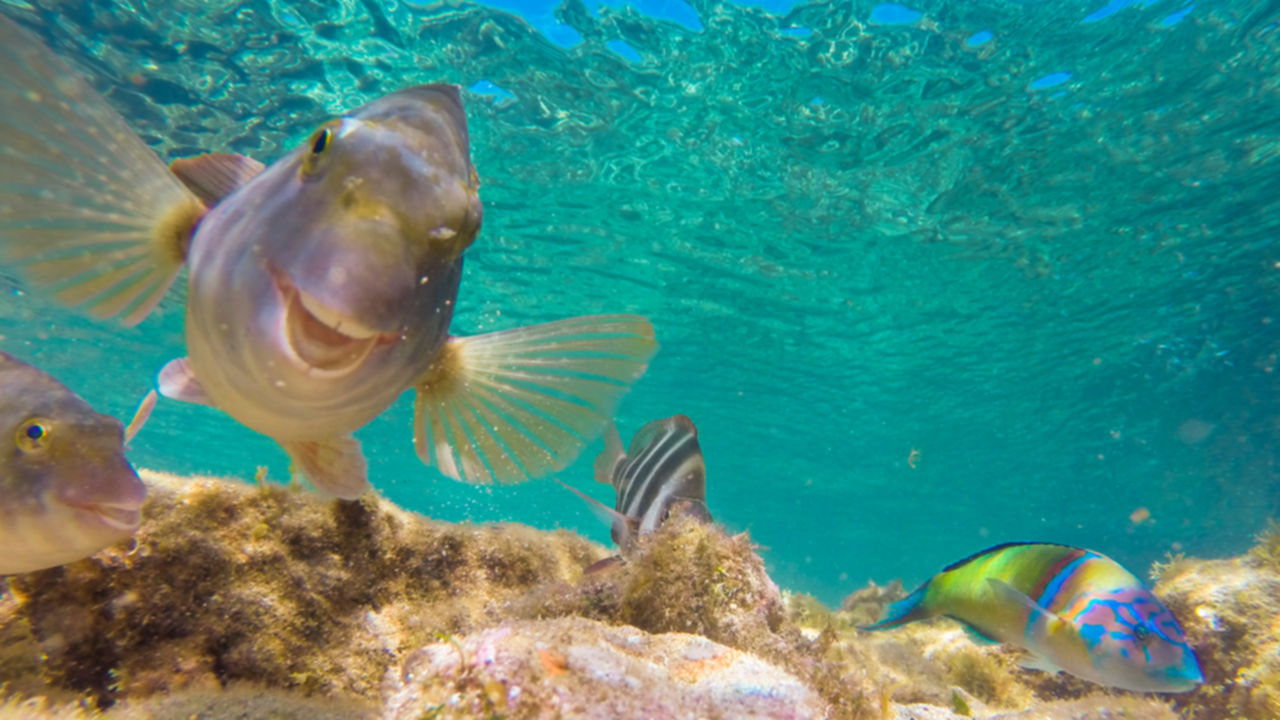
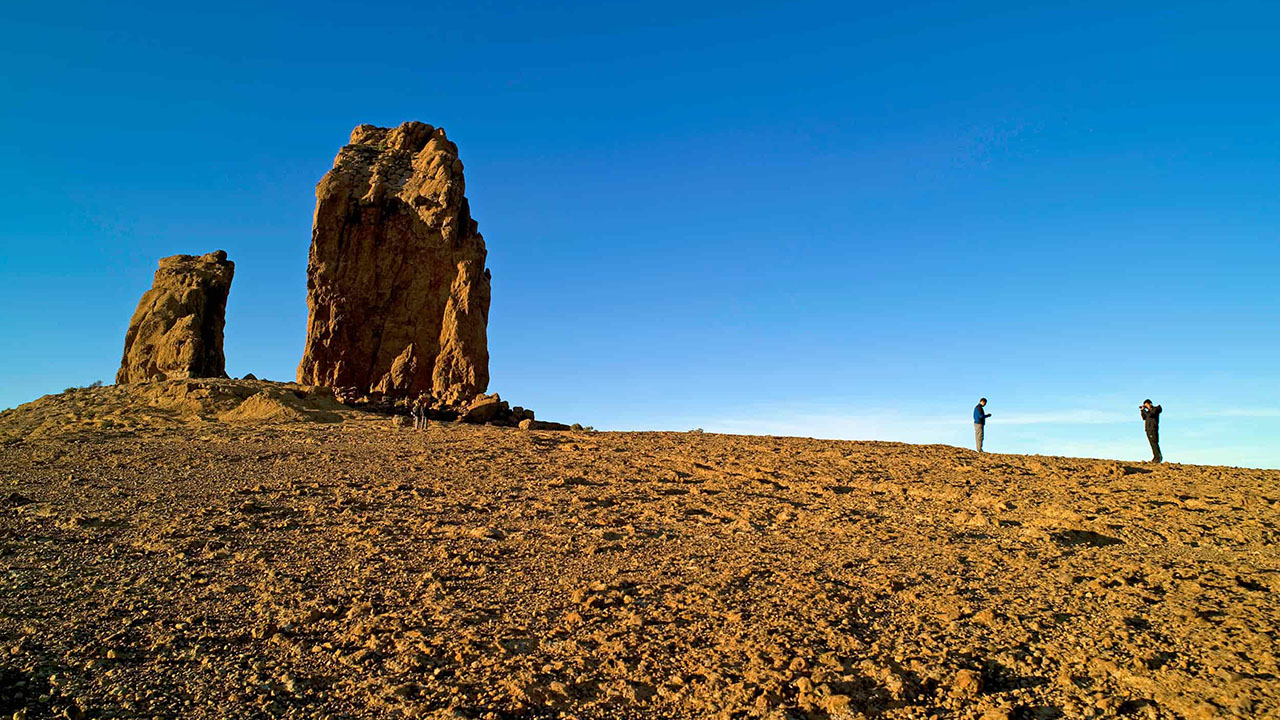
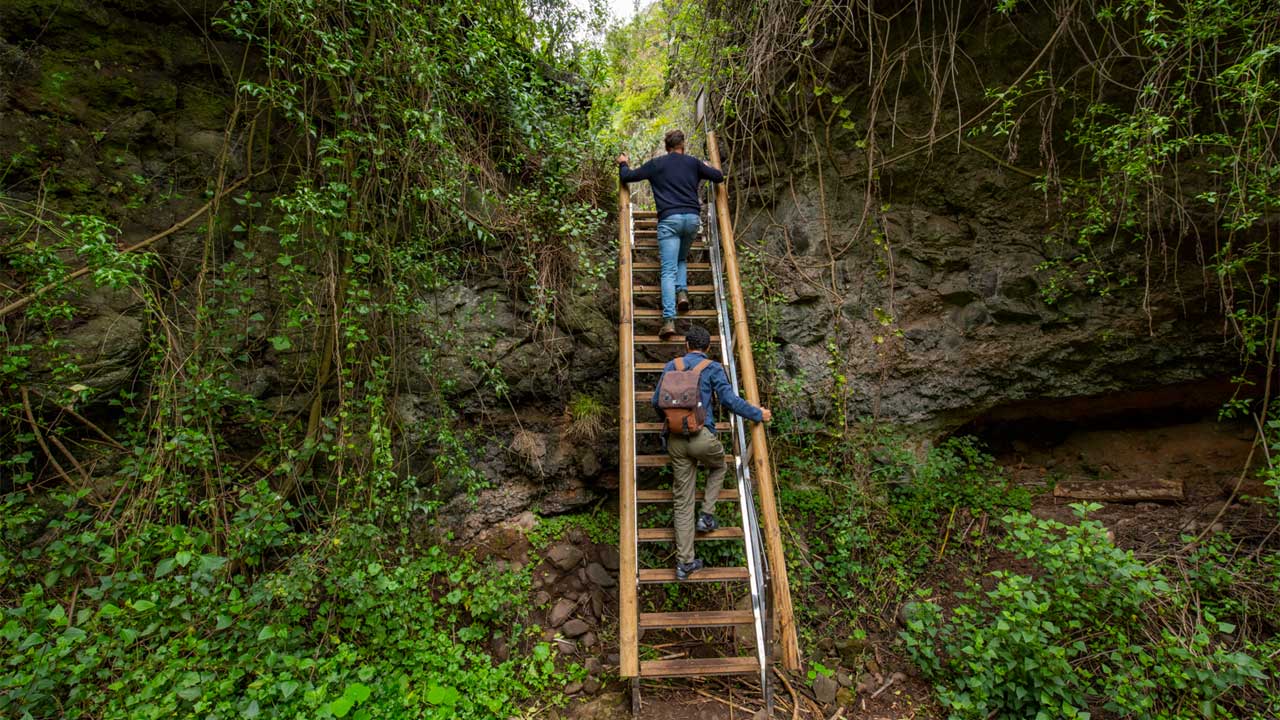
Comments are disabled for this post.